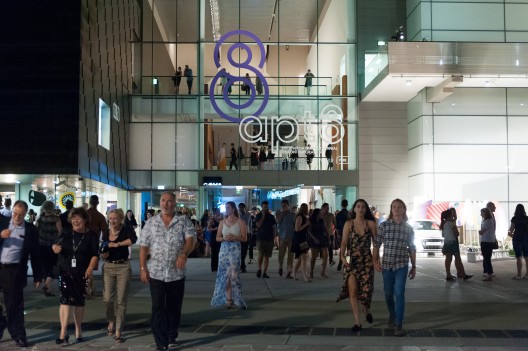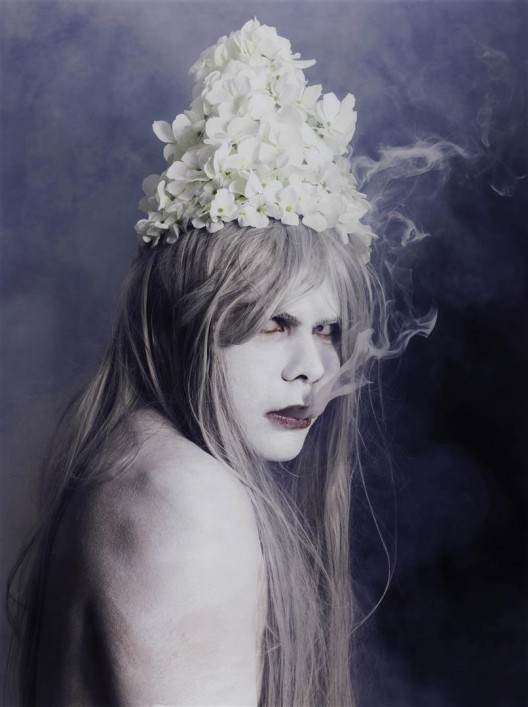This review is included in Ran Dian’s print magazine, issue 3 (Spring 2016)
The 8th Asia Pacific Triennial of Contemporary Art (APT8)
Queensland Art Gallery (QAG) and Gallery of Modern Art (GOMA) QAGOMA (Stanley Place, South Bank Brisbane Queensland Australia), Nov 21, 2015–Apr 10, 2016
VIEW 1/BAD SCOTT: There is no “dislike” icon on Facebook because Zuckerberg just doesn’t want it. Likewise, QAGOMA (Queensland Gallery of Modern Art) would like there to be no dislike icon to click with its APT8 (the 8th Asia Pacific Triennial of Contemporary Art). What was once a visionary experiment for QAG in 1993 has degenerated into an uninteresting trade fair of the exotic. For the Australian art world, it’s like a three-yearly family Xmas one attends out of duty rather than any real pleasure. I, of course, am the worst person to write on APT or any other biennale/triennial as I firmly regard these sprawling grab-bags of cultural product as by now totally unnecessary. Most of the art world uses an APT or biennale as a chance to network and hold various professional get-togethers. Let’s face it: no one is really interested in the actual work anymore, but no one will say this publicly, and so the years go by.
We all know that Christmas is primarily for children, that is why we all sit and watch the delight (or not) on the kids’ faces when they open their presents. The adults mournfully pass hastily wrapped socks, gift vouchers, lottery tickets and biographies to each other, but it’s the kids who actually make us laugh. So it’s no wonder that art galleries across the world are transforming into baby crèches and crowd control for pram jam. I’m waiting for a real McDonalds franchise to open permanently in the center of GOMA. Murakami provocatively positioned his shop in the center of his 2007 Los Angeles Museum of Contemporary Art (1)—no Exit Through The Gift Shop for him. Everyone knows I prefer my local Westfield Shopping Centre and its store windows than any contemporary art. I mean, the product is made of exactly the same stuff. It’s the same big photo or colorful and glittery display; it’s just that one is in an art context, and one is in a shopping center. My dream is to make this reality of context transparent. I am no longer afraid of the mystery of art.
Of course, for those of us who see art as a quasi religion every manifestation of art means a renewal of the faith. So when I and others are utterly bored, it’s because we are unbelievers and are therefore cynical and to be dismissed. Why are people like me around to spoil the Sunday church service with scones and tea afterwards? But it’s not that people like me don’t believe, we just believe in something different for art.
I suppose that to stare into an Anish Kapoor deep powder blue concave wall piece for over an hour till the guards come and question you is a form of belief, but then so is being thrilled at really good CGI in a sci-fi film. We are talking here of the concept of suspension of disbelief. In order to enjoy APT8, one has to revert to being a child and deny all one’s prior knowledge so as to “see again” the art. Some artworks or art situations can still do this. I purposefully didn’t attend the opening of APT8 to enable me to see the works “apart” from what I’m told was a semi-performative free-for-all: naked woman and/or transgender; a blackface Eric Bridgeman behind a PNG Simbu shield…let alone the socially excited audience itself.
When I visited a few days later the galleries seemed quite dull, the artworks were now only props leftover from the party, and not very interesting ones at that. Thankfully the Len Lye kinetic/sound sculpture “Blade” (1959-76) was in full “wobble” just as I entered, which made me happy for a few minutes until ennui set in.
We need to face the sad fact that the vast majority of contemporary art is now a reworking of the same accepted tropes. As Boris Groys says in his essay “On The New”:
The new artwork looks really new and alive only if it resembles, in a certain sense, every ordinary, profane thing, or every other ordinary product of popular culture. (2)
We could add to this dictum that the new artwork has to resemble every other past artwork, otherwise we couldn’t recognize it as art.


VIEW 2/GOOD SCOTT: However, in the same essay “On The New”, Boris Groys speaks highly of the museum and the big biennale-type exhibitions. Groys is positive when he compares museums to churches as showing the public both what is old and what is new. To Groys, what is “new” is that which is outside the museum. Groys also says (and maybe he’s right) that all artists want to “enter” the museum, otherwise “you remain a plain, decent person with no chance of a career in the archives of God’s memory”. (3) However, Groys points out that no living artist wants to be “dead” in the Museum. This is why so many twentieth-century avant-garde artists wanted to destroy the museum and the ancien régime. Modern art is littered with futurist manifestos demanding we “burn down the libraries and flood the museums”. This is why artists simultaneously want to be free of the museum, but also to be buried there. So, when an artist or maker from the Asia Pacific region is invited into an APT8, it is very exciting: it proves the worth and beauty of being alive.
When invited, the individual artist has triumphed—if only for a short time—in a Museum. I remember when that was all the excitement I wanted from art, too. Also, as QAGOMA usually acquires most APT works, the individual is given a place in the archive. Who am I to complain about this? It is around this paradox of the “new” that all parties turn. I’m going to quote a large chunk of Groys, as he is a far better at this subject than me.
In recent times, the status of the museum as the site of a permanent collection is gradually changing to the museum as a theater for large-scale traveling exhibitions …
In the modernist tradition, the art context was regarded as stable…Innovation consisted in putting a new form, a new thing, in (a) stable context. In our time, the context is seen as changing and unstable. So the strategy of contemporary art consists of creating a specific context which can make a certain form or thing look other, new and interesting…Traditional art was working on the level of form. Contemporary art is working on the level of context, framework, background, or of a new theoretical interpretation. But the goal is the same: to create a contrast between form and historical background, to make the form look other and new. 4
But as I have said, my own personal relationship to most contemporary art is one of annoyed ambivalence at best. What can I (and a lot of my friends) do? Suppress our desire for a real “new” or a real shock or challenge to our sensibilities and instead act so very pleased for all the individual artists chosen to be part of APT or any other art event? The simple binary of the old desire for Modernist formal innovation versus another desire for the supposedly “endless” change of contemporary art is not enough. How can that be honest to one’s own self, to again be “bothered” about a contemporary art that has ceased to be contemporary: has turned so quickly into its own tradition. There’s the rub.




Endnotes
1. “© MURAKAMI” opened at Museum of Contemporary Art, Los Angeles in 2007 and traveled to Brooklyn Museum, New York, Museum für Moderne Kunst, Frankfurt, and Guggenheim Museum, Bilbao during 2008–09.
2, 3 & 4 Boris Groys, “On The New”, in Art Power, MIT Press: Cambridge MA, 2008.
Corrections: This article was amended on Monday, 8 February to remove a reference regarding Art+Language which the author did not intend to be included in the final text.